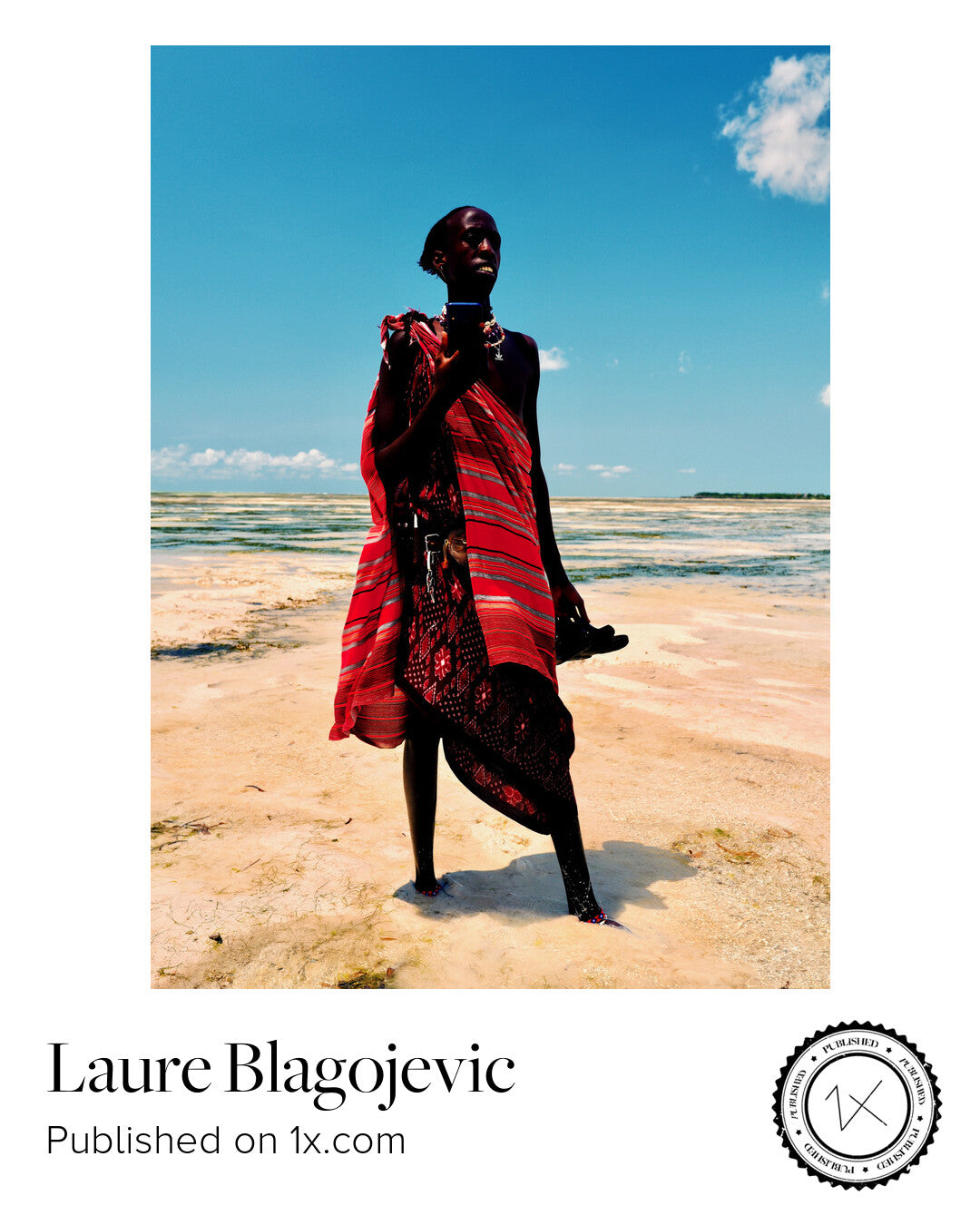
Maasai hybridization
Share
A Maasai man, dressed in a bright red shúkà, holds a smartphone in his hand. Barefoot on the sand, his face turned toward the light, he walks between lagoon and sky, between cultural heritage and contemporary ultra-connectivity .
This photograph, taken on a beach in Zanzibar and selected by 1X.com , crystallizes a fertile tension between visible tradition and fluid modernity. Here, nothing is fixed. The fabric, the gestures, the objects tell the story of a world in constant mutation.
Legacy carried, present reconfigured
The shúkà—the traditional cloth worn by Maasai men—is a powerful marker of identity here. It contrasts with the phone held firmly, like an extension of the body. The man isn't posing: he's walking, leaping forward, in a harsh light that emphasizes the power of the red and the density of the blue.
The image does not oppose two worlds. It makes them coexist in the same body, the same presence. The shadow cast, the wet sand, the sea in the background remind us that this scene is both anchored in a place and universal in its scope.
Zanzibar, a land of passage and hybridization
In Zanzibar, Maasai men do not live on their traditional lands. Many come temporarily to work to support their families who remain in the villages of northern Tanzania. Their presence is marginal, sometimes misunderstood, but very real.
This image bears witness to this mobility, this discreet adaptation: an ancestral fabric, a contemporary telephone, a face standing in between.

